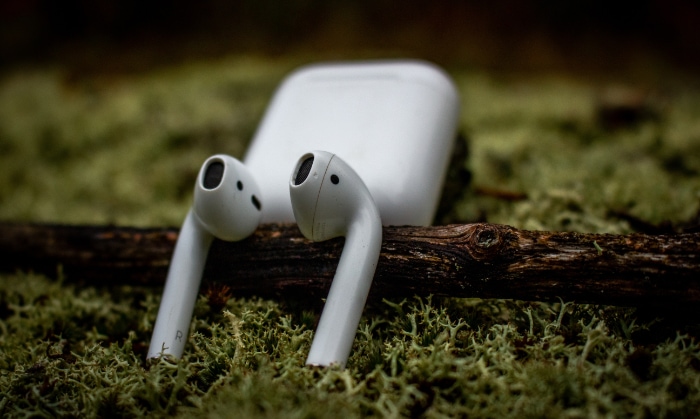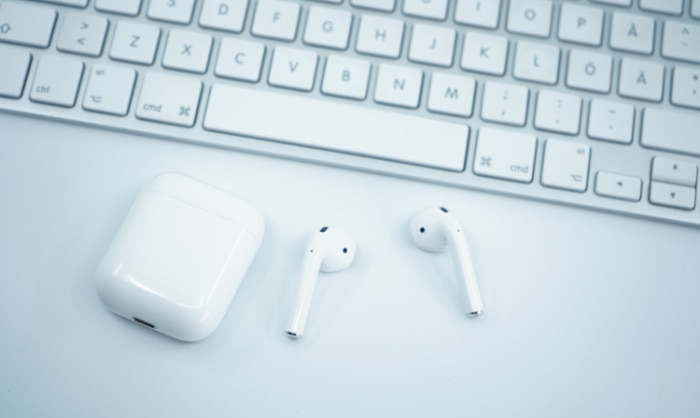AirPods Hurt My Ears: Finding Comfort in Personal Audio

AirPods have swiftly become a symbol of wireless audio convenience, effortlessly blending into our daily lives from bustling commutes to cozy living room corners. Yet, amidst their growing popularity, a less-discussed narrative is emerging: for some users, these sleek gadgets are a source of discomfort, even pain.
Imagine eagerly unwrapping your new AirPods, only to find that wearing them feels like trying to fit a square peg into a round hole – literally.
Anatomy of the Ear and AirPods Design
The human ear is a complex structure, uniquely shaped for each individual, much like a fingerprint. It’s essential to understand this anatomy to grasp why some earbuds, like AirPods, might not be the perfect fit for everyone.
Understanding the Human Ear
Our ears are not just about hearing; they are intricately designed organs with distinct parts. The part of the ear where earbuds rest is called the concha, leading to the ear canal.
The shape and size of these areas vary greatly among individuals, influencing how well earbuds fit. Some might have larger conchas, making standard earbuds feel loose, while others could have smaller or more angular canals, causing discomfort with certain designs.
AirPods: A One-Size-Fits-Most Approach
When Apple designed AirPods, they opted for a one-size-fits-most approach. This design, while sleek and minimalist, doesn’t account for the vast differences in ear shapes and sizes.
The hard plastic shell of AirPods, without silicone or foam tips, can be particularly unforgiving for those with smaller or more sensitive ears. While this design might work for the majority, it inevitably leaves out a significant number of users who find the fit less than ideal.
The Clash of Design and Anatomy
The key issue arises from the clash between the uniform design of AirPods and the diverse anatomy of human ears. For users whose ear shape doesn’t align with the design, the rigid structure of AirPods can press against sensitive areas, leading to discomfort or even pain during prolonged use.
This mismatch highlights a crucial aspect of earbud design: the need for adaptability to accommodate various ear shapes and sizes.
Identifying the Cause of Discomfort
When AirPods cause discomfort, it’s not just about the fit. Several factors can contribute to this unpleasant experience.
Understanding these causes is key to finding a comfortable solution.
Prolonged Use and Ear Fatigue
Extended use of earbuds, especially ones that don’t fit perfectly, can lead to ear fatigue. This is a form of discomfort that arises from constant pressure in the ear canal or on the concha.
Over time, this pressure can cause soreness, making even the lightest earbuds feel uncomfortable.
Improper Fit and Pressure Points
A significant cause of discomfort is the improper fit of the AirPods in the ear. If the earbuds are too large or oddly shaped for an individual’s ear, they can create pressure points.
These points, where the earbud exerts more pressure against the skin, can lead to pain and irritation, particularly with prolonged use.
Material Sensitivities
Some users might have sensitivities or allergies to the materials used in AirPods. The skin in and around the ear canal is delicate and can react to prolonged contact with certain plastics or metals.
This reaction can manifest as itchiness, redness, or swelling, contributing to the overall discomfort.
Lack of Cushioning
AirPods, with their hard plastic design, lack the cushioning found in some other earbud models. This lack of soft material can be less forgiving for the sensitive inner ear, leading to discomfort during extended wear.
Ear Health and Hygiene
Ear health and hygiene play a crucial role in comfort. Wax buildup or sensitive skin conditions can exacerbate discomfort caused by earbuds.
It’s important to maintain good ear hygiene and be aware of any personal health conditions that might influence earbud comfort.
Solutions and Alternatives

For those experiencing discomfort with AirPods, there are several practical solutions and alternative options to consider. These strategies can help enhance comfort and ensure a better listening experience.
Adjusting Fit and Usage
- Regular Breaks: Taking frequent breaks can help alleviate ear fatigue caused by prolonged AirPod use.
- Position Adjustments: Slightly adjusting the position of the AirPods in the ear can reduce pressure points and improve comfort.
- Limiting Continuous Use: Reducing the continuous use time can prevent discomfort from developing.
Accessory Options
- Ear Hooks or Wings: These accessories can provide a more secure fit, distributing the weight and reducing pressure in the ear canal.
- Silicone Tips or Covers: Adding silicone tips or covers to AirPods can create a softer, more cushioned feel, which might be more comfortable for sensitive ears.
Seeking Professional Advice
- Consulting an Audiologist: For persistent discomfort, consulting an audiologist can provide personalized advice and solutions based on individual ear anatomy.
Exploring Alternative Earbuds
- Earbuds with Customizable Tips: Many earbuds come with interchangeable silicone or foam tips, allowing for a more personalized and comfortable fit.
- Different Designs: Exploring earbuds with different designs, such as in-ear, over-ear, or open-fit, can help find a style that is more comfortable for the individual user.
- Brands with Ergonomic Focus: Some brands focus specifically on ergonomic design, which might be more suitable for users with unique ear shapes or sensitivity issues.
Lifestyle Considerations
- Active Lifestyle Earbuds: For users with active lifestyles, earbuds designed for sports with better grip and water resistance might offer improved comfort during physical activities.
- Sound Quality Priorities: If sound quality is a priority, exploring high-fidelity earbuds or those with noise-canceling features can enhance the overall listening experience.
Long-term Considerations
When it comes to using earbuds like AirPods, it’s not just the immediate comfort that matters. Long-term considerations are crucial in ensuring ear health and maintaining a sustainable and enjoyable listening experience.
Impact on Ear Health
- Hearing Protection: Prolonged exposure to loud music can lead to hearing damage. It’s important to manage volume levels to protect your hearing over the long term.
- Ear Hygiene: Regular cleaning of earbuds is essential to prevent ear infections and maintain hygiene, as earbuds can accumulate earwax and bacteria.
- Monitoring Changes in Ear Comfort: Being attentive to any changes in ear comfort or hearing over time is important. Persistent discomfort or changes in hearing should prompt a consultation with a healthcare professional.
Sustainability in Usage
- Durability of Earbuds: Choosing earbuds that are durable and have a longer lifespan can be more sustainable and cost-effective in the long run.
- Battery Life Considerations: Longer battery life means less frequent charging, which can contribute to the longevity of the earbuds.
Technological Advancements
- Keeping Up with Innovations: The earbud market is continually evolving. Staying informed about new technologies and designs can lead to better choices for comfort and functionality.
- Upgrade Decisions: Deciding when to upgrade to a newer model should be based on significant improvements in technology, comfort, or ear health benefits.
Balancing Comfort with Lifestyle Needs
- Aligning Earbud Choice with Lifestyle: Your choice of earbuds should align with your lifestyle and usage patterns. What works well for a daily commuter might not suit someone using earbuds primarily for exercise.
Financial Investment
- Cost vs. Benefit Analysis: When considering expensive earbuds like AirPods, weigh the cost against the benefits received. Sometimes, more affordable options can provide similar or better comfort and quality.
Conclusion
AirPods, while a symbol of modern audio technology, aren’t a perfect match for everyone’s ears. This exploration has shown that discomfort with AirPods can stem from various factors, including ear anatomy, prolonged usage, material sensitivities, and lack of cushioning.
By comparing AirPods with other earbuds, it becomes clear that the market offers a plethora of designs, each addressing different needs and preferences. Solutions like adjusting fit, using accessories, or consulting professionals can alleviate discomfort for some users.
However, for others, exploring alternative earbuds might be the key to finding comfort and maintaining ear health. Long-term considerations, such as sustainability and technological advancements, are essential in making an informed choice that aligns with lifestyle needs and financial constraints.
Through this comprehensive look at the issues surrounding AirPods and ear comfort, it’s evident that personal audio is a highly individual experience, requiring thoughtful consideration of one’s unique requirements and preferences.



